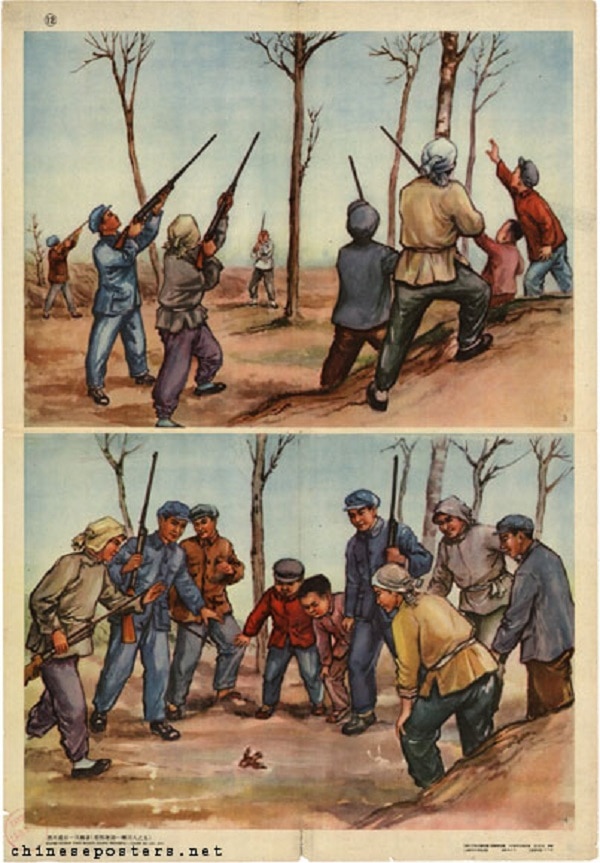
ADVERTISEMENT - CONTINUE READING BELOW
A Brainstorm That Killed Millions
China paid dearly for Mao’s failure to grasp the basics of ecological balance: the sparrow extermination campaign contributed to tens of millions deaths. Sparrows might eat grain and fruits, but they also eat insects – many insects. Especially locusts, whose chief predator who keeps their population in check, happens to be sparrows. Without sparrows, the locust population exploded. They fell upon China’s crops in massive swarms that blanketed the sky and obscured the Sun. Rather than increase crop yields, the extermination of sparrows ended up substantially decreasing China’s available rice.

ADVERTISEMENT - CONTINUE READING BELOW
In 1960, Mao ordered the removal of sparrows from the “Four Pests”, and had them replaced with bed bugs. It was too late. The locusts ate up so much grain that disaster ensued. Between that and the mismanagement that accompanied the Great Leap Forward, the country was plunged into famine. By the time it was over, tens of millions had starved to death, with estimates going as high as 45 million fatalities. Eventually, after having nearly eradicated China’s native sparrow population, Mao’s government forced to import 250,000 of the small birds from the USSR to replenish its stock.

